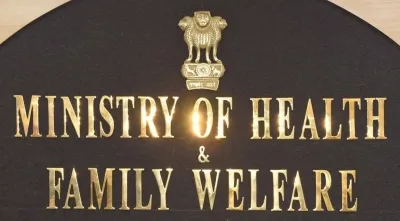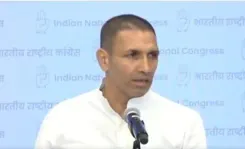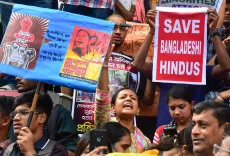Is India's Immunization Coverage Surpassing Global Averages?

Synopsis
Key Takeaways
- India's zero-dose children reduced to 0.06% in 2024.
- High vaccination coverage surpasses global averages.
- Significant drop in DTP dropout rates from 7% to 2%.
- Immunization strategies focus on antigen-specific responses.
- Recognized by the UN Inter-agency Group for Child Mortality Estimation.
New Delhi, June 28 (NationPress) Despite a recent Lancet publication identifying India as one of eight nations with a significant number of zero-dose children—those who have not received any routine childhood vaccines—the Union government asserted that the country’s vast population and impressive vaccination rates should be factored into such evaluations.
The government emphasized that India's antigen-specific immunization rates exceed global averages across all vaccines.
In essence, India’s vaccination approach is strategically designed to target antigens that elicit immune responses to combat pathogens (such as viruses and bacteria).
The international study, conducted by the Institute for Health Metrics and Evaluation at the University of Washington, revealed that in 2023, more than half of the world’s 15.7 million unvaccinated children resided in merely eight countries. These were predominantly in sub-Saharan Africa (53%) and South Asia (13%): Nigeria, India, the Democratic Republic of Congo, Ethiopia, Somalia, Sudan, Indonesia, and Brazil.
The government pointed out that through persistent efforts and proactive vaccination campaigns nationwide, the proportion of zero-dose children in India has decreased to 0.06% in 2024, down from 0.11% in 2023.
These statistics, which position India as a global leader in child health, have also been recognized by the UN Inter-agency Group for Child Mortality Estimation in its 2024 report, as stated by the Ministry of Health and Family Welfare.
Additionally, referencing the WUNEIC report 2023, the Ministry highlighted that national coverage for Diphtheria-tetanus-pertussis (DTP)—DTP1 and DTP3—ranks among the highest when compared to other nations with a substantial number of zero-dose children.
According to the WUENIC 2023 data, India has achieved a DTP-1 (Penta-1) coverage of 93%, which translates to 2.47 crore out of 2.65 crore infants vaccinated, notably surpassing Nigeria’s 70% during the same period.
Furthermore, the dropout rate from DTP-1 to DTP-3 has significantly declined from 7% in 2013 to 2% in 2023, and coverage for Measles has risen from 83% in 2013 to 93% in 2023.
When comparing countries based on the percentage of zero-dose children relative to their total population, nations such as Yemen (1.68%), Sudan (1.45%), Angola (1.1%), Afghanistan (1.1%), Nigeria (0.98%), DR Congo (0.82%), Ethiopia (0.72%), Indonesia (0.23%), and Pakistan (0.16%) have significantly higher rates than India’s 0.11% in 2023, according to the latest WUNEIC report.
Thus, the Ministry asserted, “Any comparison of India with other nations facing high rates of zero-dose children must consider India’s immense population and substantial vaccination coverage.”
“Consequently, any analysis based solely on isolated factors does not accurately reflect the country's achievements in its immunization initiatives,” it added.
The Ministry reiterated that India’s steadfast commitment to immunization is evident through milestones such as the eradication of polio in 2014, the elimination of maternal and neonatal tetanus in 2015, and the launch of the measles-rubella campaign planned for 2025.





